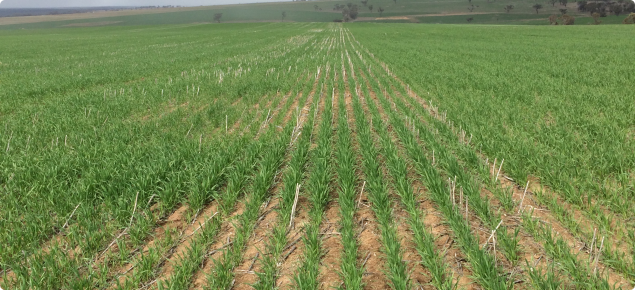Background
Growing season rainfall is variable across the Western Australian cropping region influencing yield of winter sown crops. In February 2017 a summer rainfall event produced falls greater than 40mm across the WA wheatbelt. Four opportunistic summer weed time of removal trials were implemented. Two were situated in low rainfall areas in the eastern wheatbelt, Moorine Rock and Beacon, one in a medium rainfall site in the Albany port zone at Jerramungup and a high rainfall site at Neridup in the Esperance port zone.
The sites were left for one month after the rainfall event to allow weed growth. Each trial was sprayed 1-4 times from March until sowing (Table 1).
| Site | First spray | Second spray | Third spray | Fourth spray |
|---|---|---|---|---|
| Moorine Rock | 14 March | 27 April (at sowing) | nd | nd |
| Beacon | 8 March | 31 March | 5 May | nd |
| Jerramungup | 16 March | 4 April | 20 April (sprayed out) | nd |
| Neridup | 9 March | 21 March | 31 March | 4 April (at sowing) |
The paddocks were sown as part of the growers’ standard practice on the following dates:
- Moorine Rock was sown to Carrolup oats on 27 April
- Jerramungup was sown to Trojan wheat on 7 May
- Neridup was sown to canola on 5 April
- Beacon was not sown due to the dry season.
Results
The growing season rainfall was below decile 1 for both Beacon and Moorine Rock with 61mm and 77mm of rain respectively from April to October 2017. Jerramungup had a decile four growing season, receiving 241mm from April to October. The site experienced short dry spells during establishment and spring, otherwise rain was consistent. The Neridup site had a decile two growing season (Esperance Downs Research Station) receiving 317mm from April to October. While the growing season rainfall was below average, the decile 10 summer rainfall provided sufficient moisture for early season growth. While this site is prone to waterlogging, there was none evident in 2017.
| site (crop) | First time of spray grain yield (t/ha) | Second time of spray grain yield (t/ha) | Third time of spray grain yield (t/ha) | Fourth time of spray grain yield (t/ha) |
|---|---|---|---|---|
| Moorine Rock (Carrolup oats) | 1.34 a | 1.04 b | nd | nd |
| Beacon (not sown) | nd | nd | nd | nd |
| Jerramungup (Trojan wheat) | 3.85 | 3.58 | 3.4 | nd |
| Neridup (canola) | 3.03 a | 3.03 a | 2.70 b | 2.88 ab |
The Moorine Rock site showed significantly higher oat yields in the sprayed plots compared to the unsprayed plots (Figure 1). Wheat yields at the Jerramungup site declined with delayed spraying, but were not significantly different. And at the Neridup site the first and second time of spray canola yields were significantly higher to the third time of spray, but not the fourth.
Conclusion
With a shift to more summer rainfall this series of trials demonstrates it is crucial to remove summer weeds quickly in low rainfall areas and seasons. Although grain yield response was not significant in this Jerramungup experiment, there are benefits to controlling weeds in medium rainfall areas. Grain yield responses are less likely from early summer weed control in high rainfall areas; however there are other consequences of a summer green bridge to consider such as pests, diseases and weed pressure in subsequent seasons. Results from summer weed control can be dependent on growing season rainfall patterns.
Acknowledgements
GRDC Project Number: DAW00256 Building crop protection and production agronomy research and development capacity in regional Western Australia.

